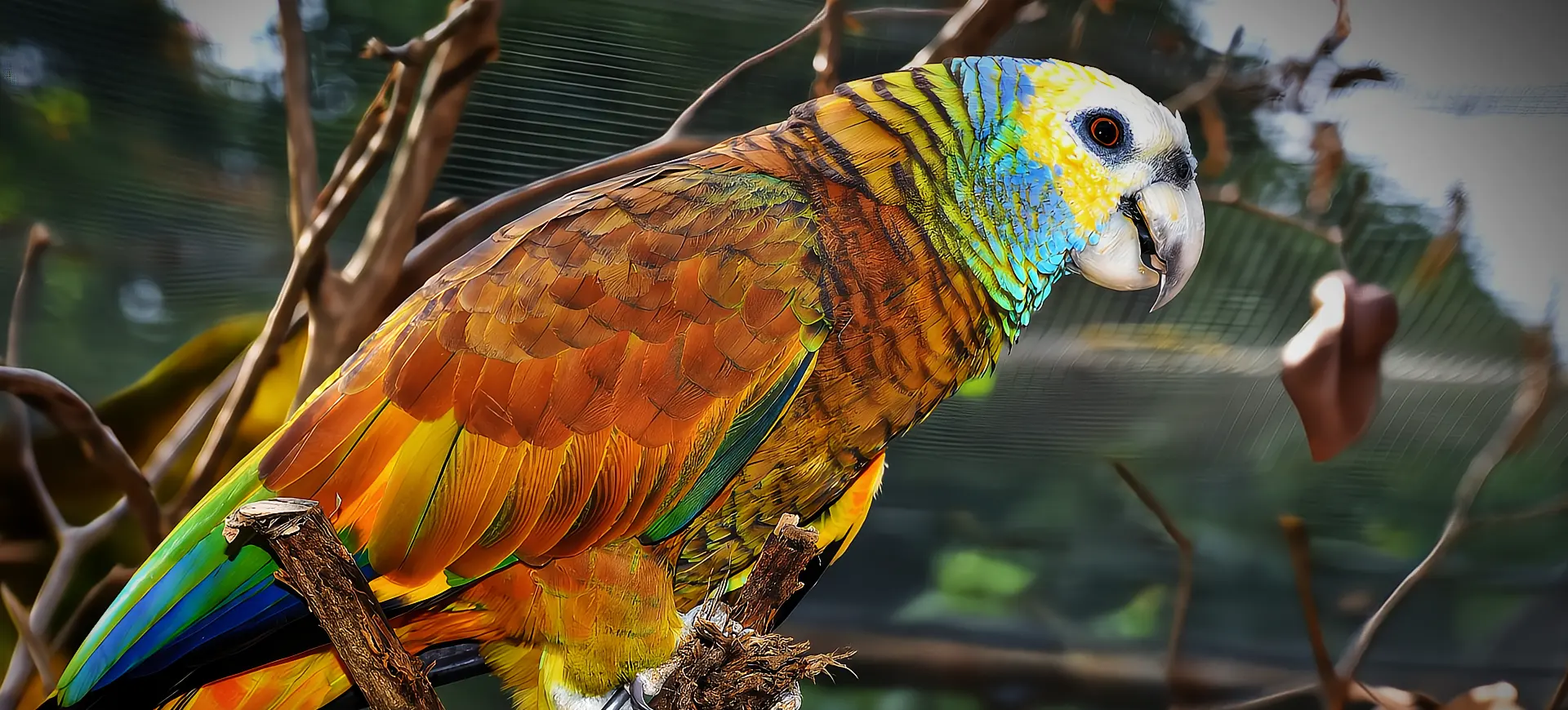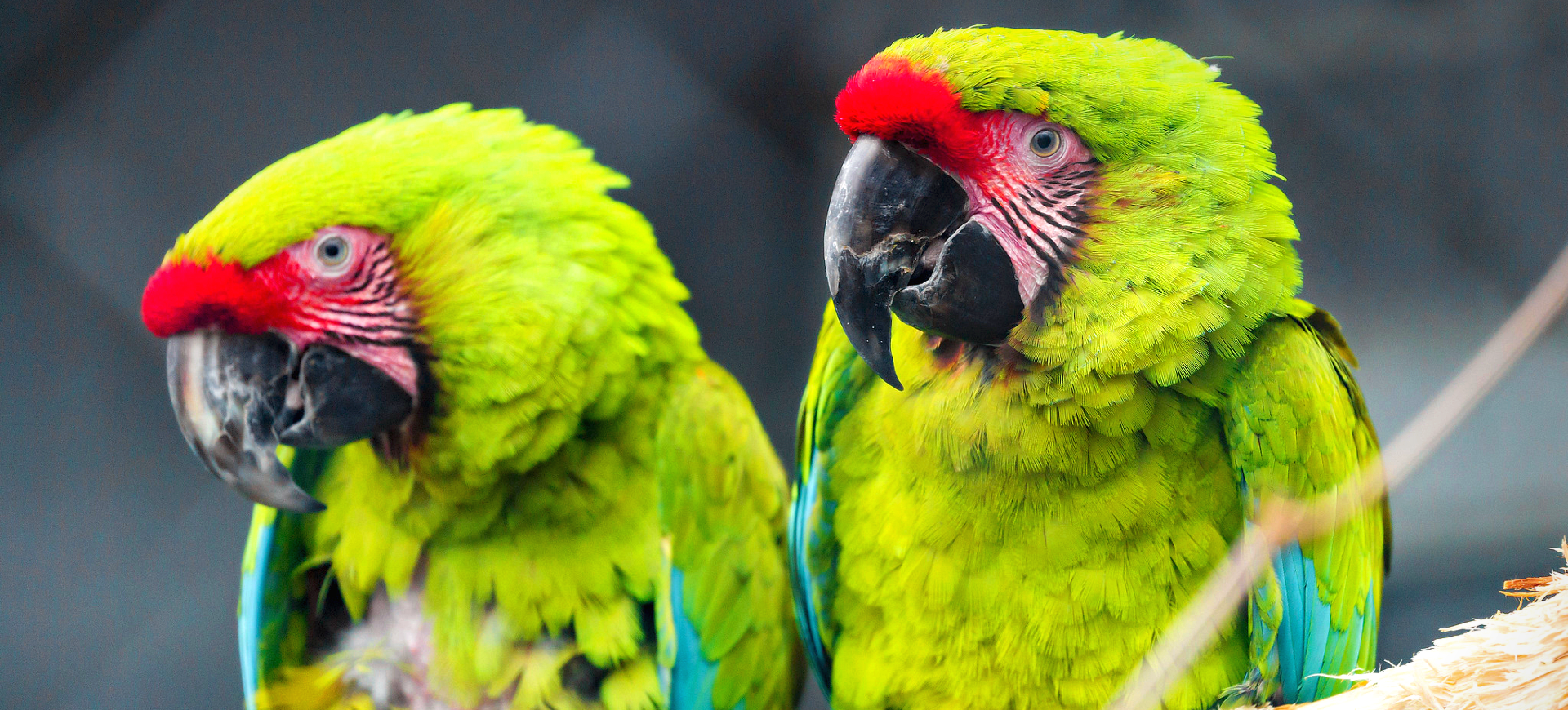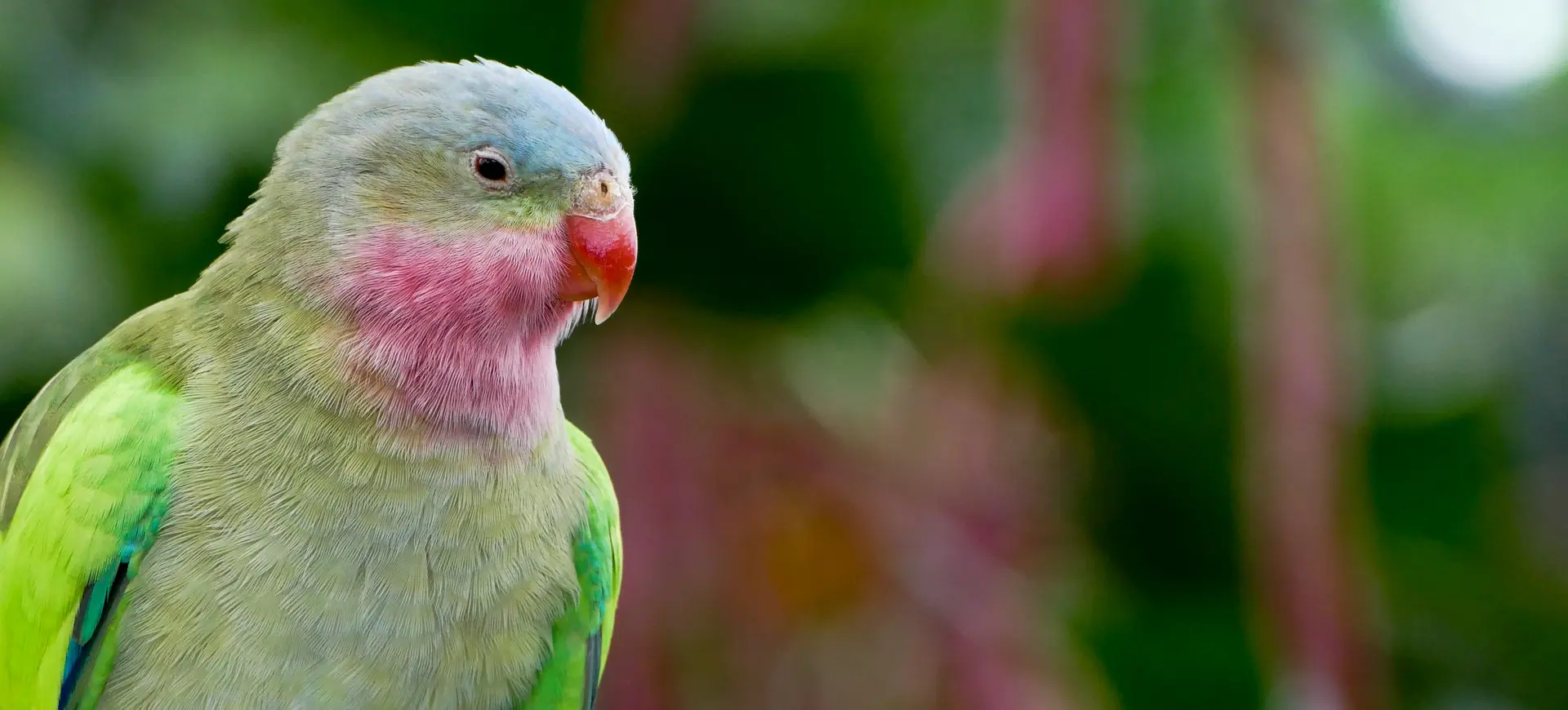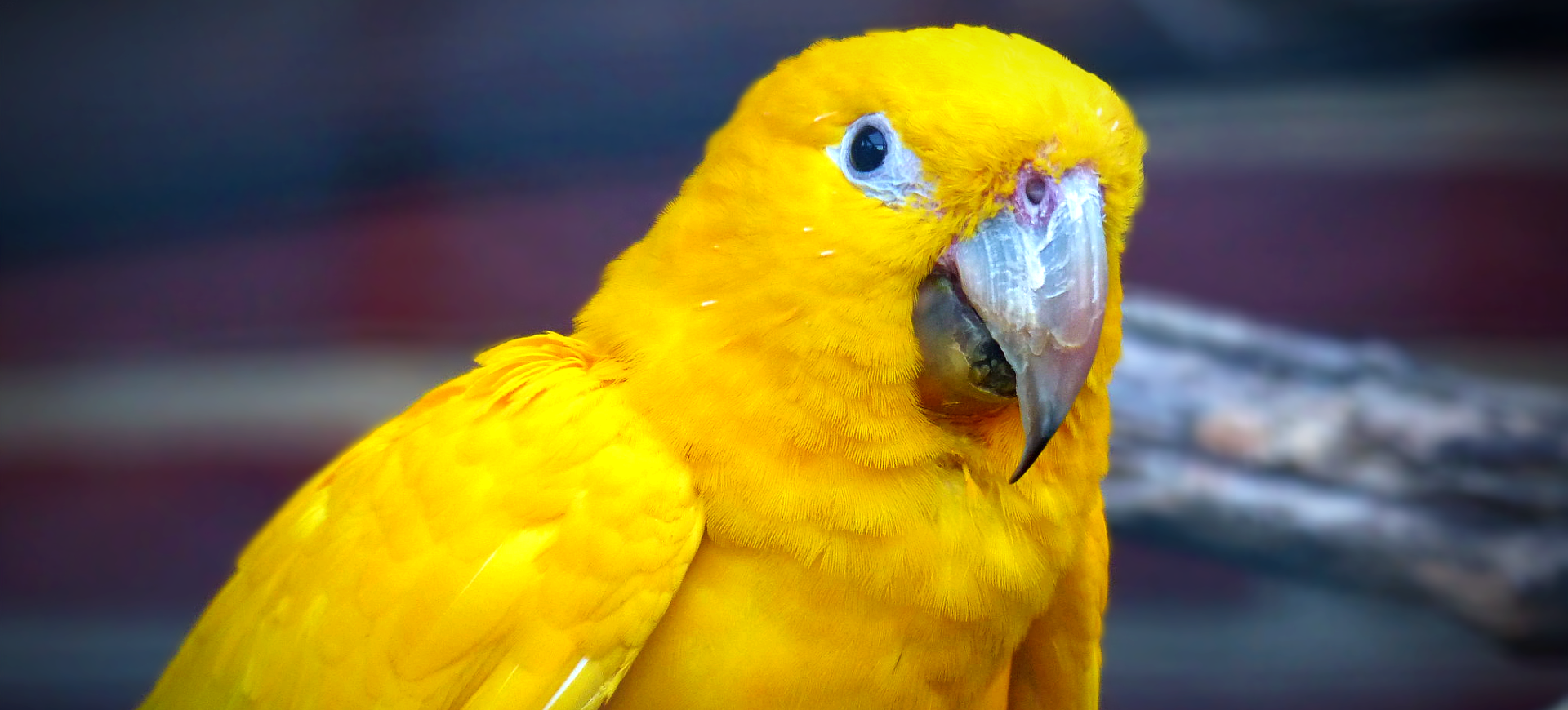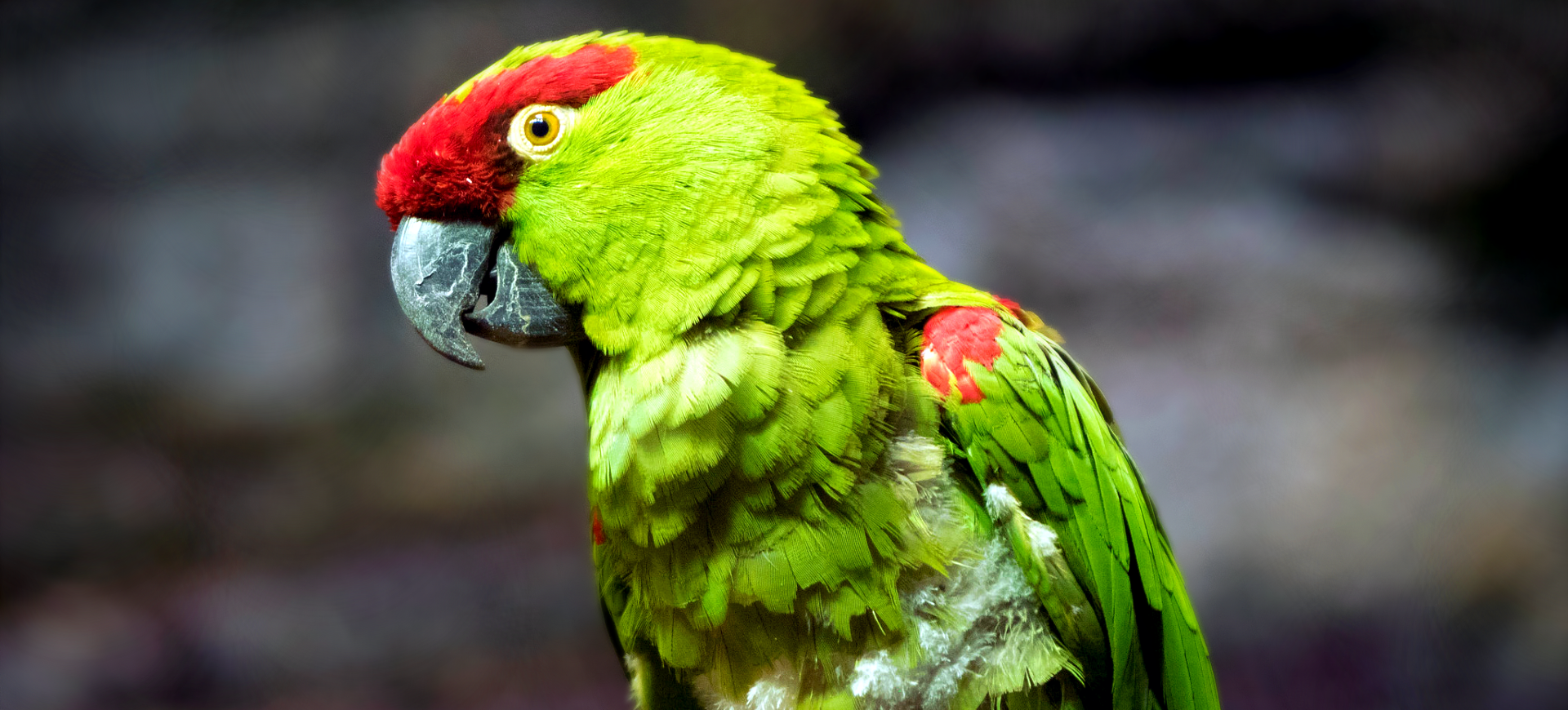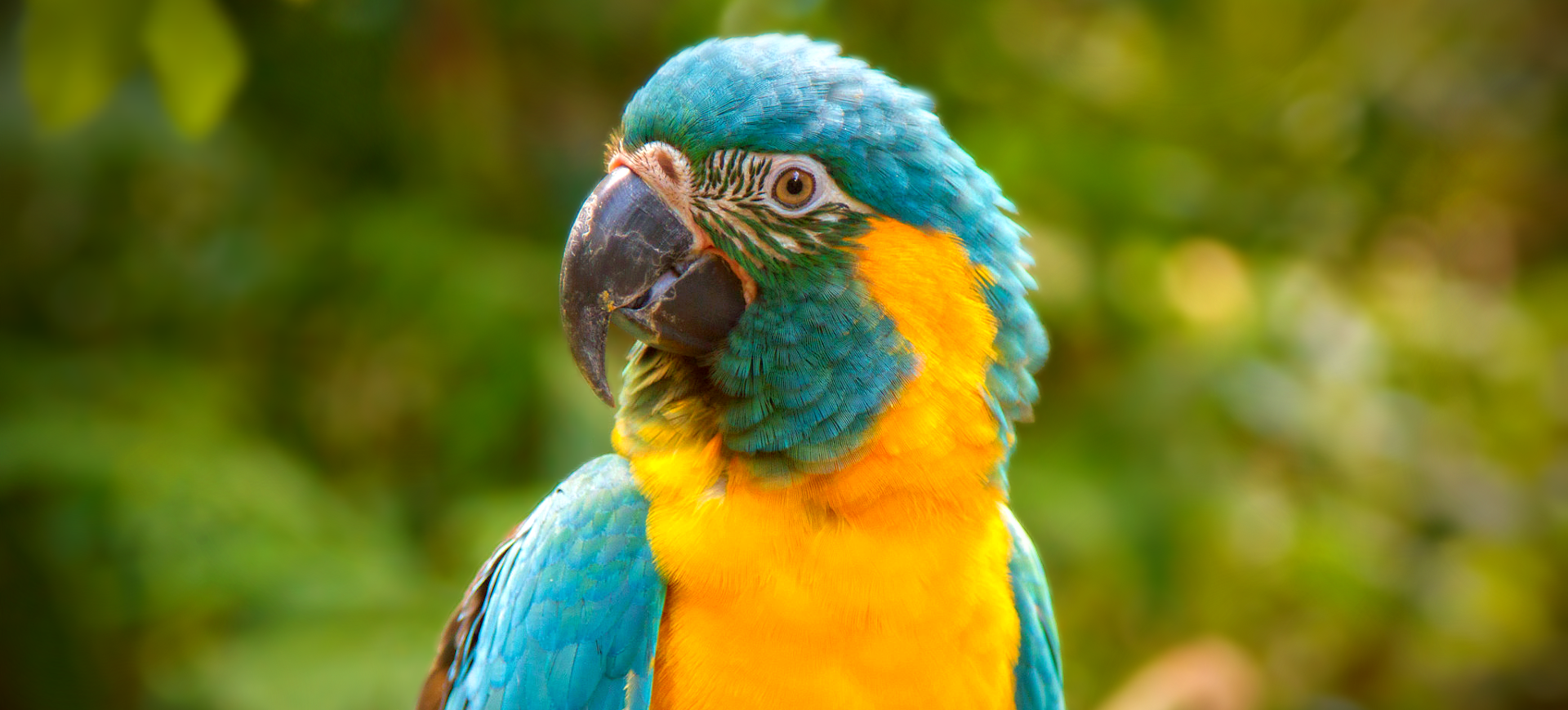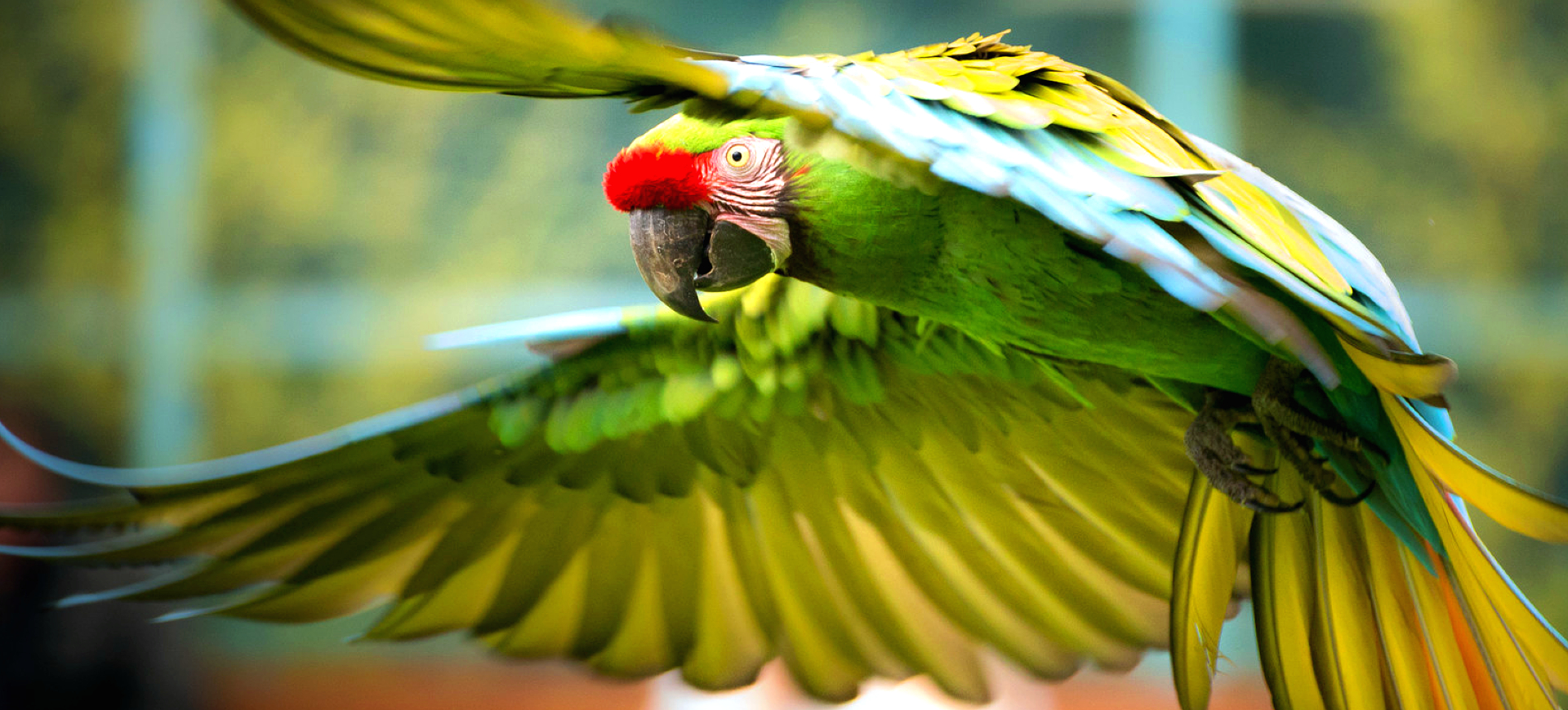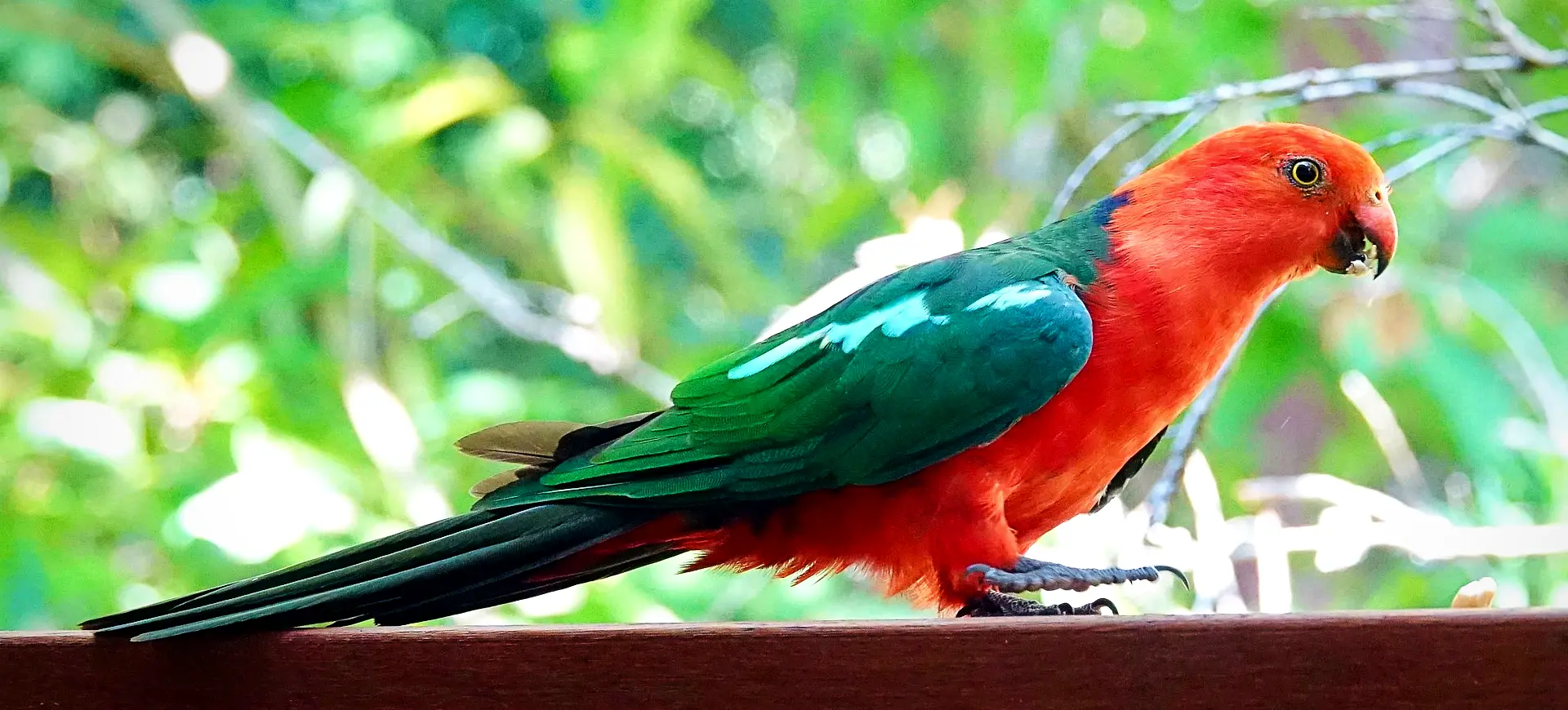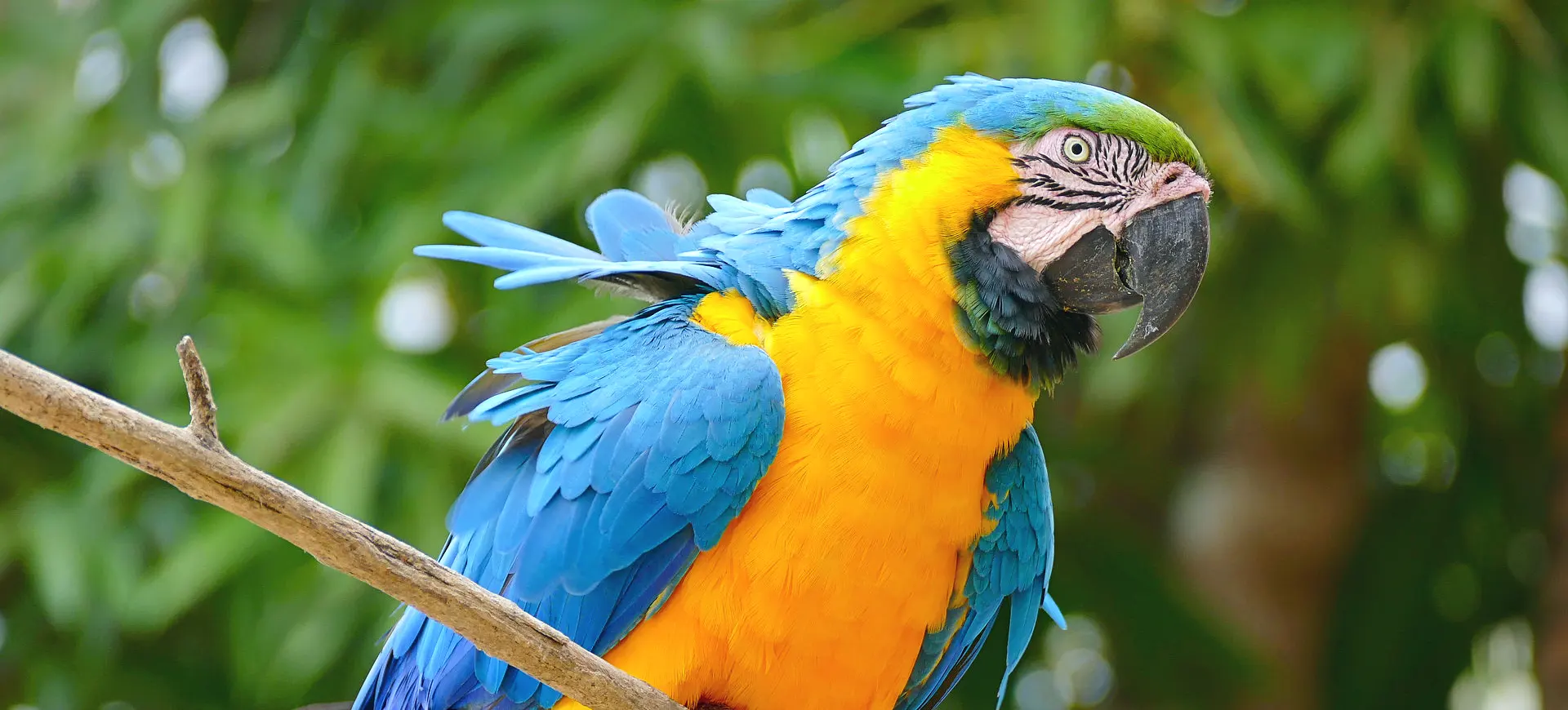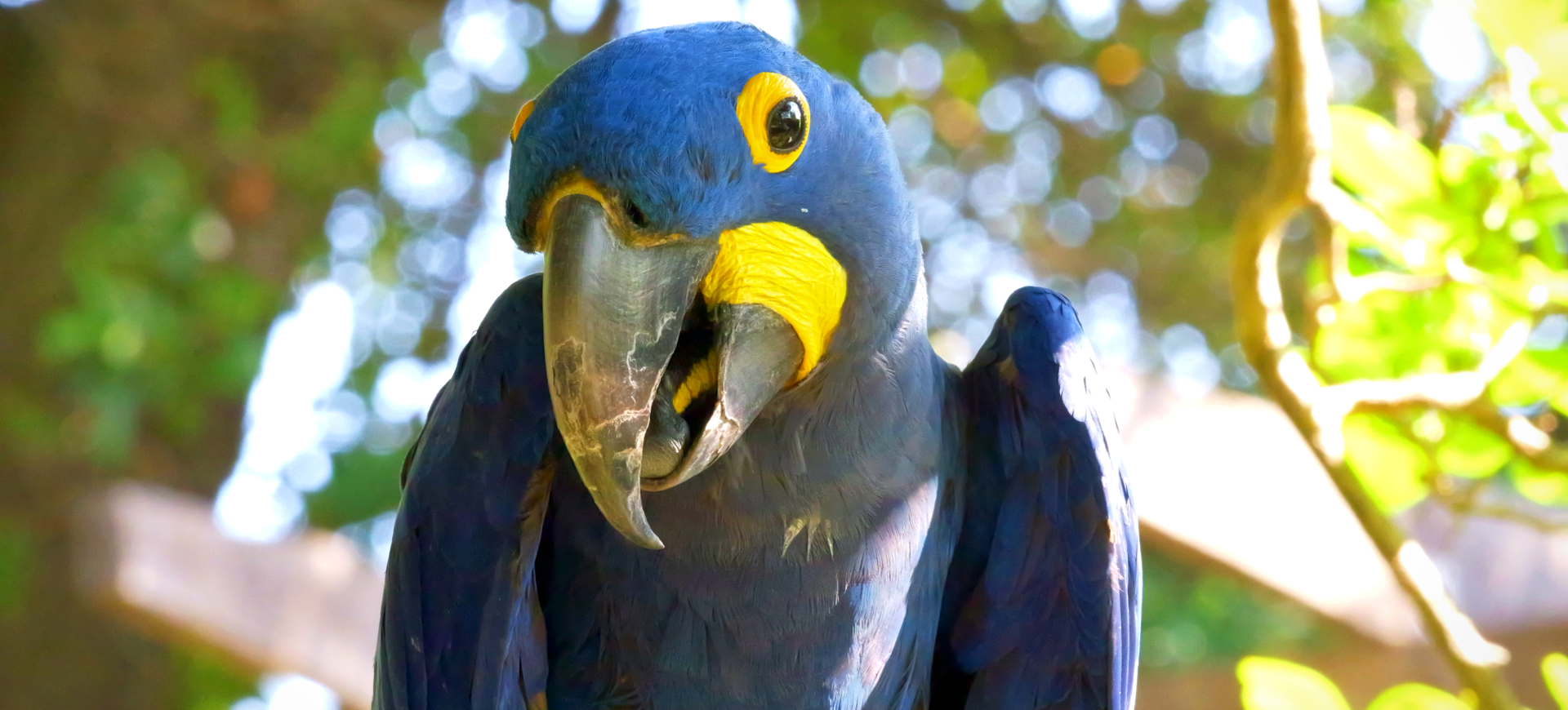Overview
The Scarlet Macaw (Ara Macao) is one of the world’s most well-known and strikingly colorful parrots. Native to humid evergreen forests in Central and South America, the Scarlet Macaw is renowned for its brilliant red, yellow, and blue plumage. The bird’s body is predominantly red, with yellow and blue feathers on the wings and tail. Their large, curved beak is adapted for cracking nuts and seeds, and the bare white skin around their eyes and face is distinctive among macaws.
Scarlet Macaws are known for their intelligence, social nature, and ability to mimic human speech. They live in pairs or small family groups and occasionally form large flocks, especially around roosting sites. These birds are vital to their ecosystems, serving as seed dispersers for various plant species. Their loud calls and squawks are characteristic of their presence in the forest and are used to communicate over long distances.
Despite their popularity and protected status, Scarlet Macaws face threats from habitat loss and the illegal pet trade. Deforestation and human encroachment have reduced their natural habitat, and capturing for sale as pets has diminished wild populations. Conservation efforts, including legal protection, habitat preservation, and breeding programs, are crucial for ensuring the survival of this iconic species.
Taxonomy
Kingdom
Phylum
Class
Order
Family
Genus
Species
Sub Species
Type
Physical Description:
Scarlet Macaws are among the largest parrots, with a robust body and long tail feathers. The most striking feature is their vivid red plumage covering most of the body. The wings mix yellow and blue, creating a stunning contrast against the red. Their tail feathers are long and pointed, with shades of blue and red.
The facial area of a Scarlet Macaw is covered with bare white skin, a feature that becomes more pronounced with age. This area can flush pink when the bird is excited or stressed. Their beak is black and powerful, designed for breaking open hard shells and fruits. Sexual dimorphism is minimal in Scarlet Macaws, with males and females looking very similar, although males may be slightly larger.

Lifespan: Wild: ~50 Years || Captivity: ~75 Years

Weight: Male: 2.2-2.7 lbs (1-1.2 kg) || Female: 2.2-2.7 lbs (1-1.2 kg)

Length: Male: 32-36 inches (81-91 cm) || Female: 32-36 inches (81-91 cm)

Wingspan: Male & Female: 40-45 inches (101-114 cm)

Top Speed: 35 mph (56 km/h)
Characteristic:
Native Habitat:
Scarlet Macaws are native to Central and South America, ranging from southern Mexico to the Amazon basin in Brazil. Their preferred habitat is tropical and subtropical moist lowland forests, where they find abundant food and nesting sites. They are also found in mangroves and woodlands. These birds are typically seen in regions with large, emergent trees, which provide essential roosting and nesting sites.
The climate in their native habitat is typically humid and hot, with heavy rainfall. These conditions support the growth of diverse plant species, providing food and shelter for the macaws. Despite their adaptability to different forest types, the loss of primary forest habitat poses a significant threat to their survival.
Climate Zones:
Biomes:
Biogeographical Realms:
Continents:
Diet:
Diet & Feeding Habits:
Scarlet Macaws are omnivores with a diet consisting mainly of fruits, nuts, seeds, and leaves. They are particularly fond of large, hard seeds and nuts, which they skillfully crack open with their powerful beaks. They also consume flowers and nectar, playing a role in pollination. Occasionally, they may eat insects and small animals.
One notable feeding behavior is their use of clay licks. Scarlet Macaws visit these mineral-rich areas to consume clay, which helps neutralize toxins found in some of their food sources and provides essential minerals. This behavior is crucial for their health and has a fascinating ecological aspect. Their diet must be carefully managed in captivity to ensure it is nutritionally balanced and mimics their natural feeding as closely as possible.
Mating Behavior:
Mating Description:
Scarlet Macaws are monogamous and form long-lasting pair bonds. During the breeding season, pairs engage in elaborate courtship displays, including synchronized flying, vocalizations, and mutual preening. These displays strengthen the bond between mates and coordinate their efforts in raising young. Nests are typically built in tree cavities or cliff faces, protecting the eggs and chicks.
The female lays two to four eggs, which she incubates for about 24 to 26 days. The male provides food and protection during this period. Once the chicks hatch, both parents feed and care for them. The young are altricial, requiring several months of care before they fledge and become independent. The strong bond between the pair is crucial for successfully rearing the chicks.
Reproduction Season:
Birth Type:
Pregnancy Duration:
Female Name:
Male Name:
Baby Name:
Social Structure Description:
Scarlet Macaws are social birds, often seen in pairs or small family groups. They form strong pair bonds with their mates, typically maintained for life. They may congregate in larger flocks outside the breeding season, especially around roosting sites or abundant food sources. These gatherings are noisy and lively, with birds communicating through various calls.
The social structure of the Scarlet Macaw is crucial for their survival, providing protection, mating opportunities, and assistance in finding food. The birds engage in mutual preening and share food, strengthening social bonds. Despite their social nature, they can be territorial, particularly during breeding. Understanding their social structure is important for conservation efforts, as it affects their habitat needs and behavior.
Groups:
Conservation Status:
Population Trend:
While the Scarlet Macaw is currently listed as Least Concern by the IUCN, its population is decreasing and faces significant threats in many parts of its range. Habitat loss due to deforestation, capture for the pet trade, and hunting are the main threats to their survival. In some areas, conservation efforts have helped stabilize populations, but they continue to decline in others.
The fragmented nature of their populations makes them vulnerable to local extinctions. Protected areas and wildlife reserves are crucial for providing safe habitats and ensuring the long-term survival of these birds. Ongoing research, monitoring, and community involvement are essential for understanding their needs and addressing the threats they face.
Population Threats:
The primary threat to Scarlet Macaws is habitat loss due to deforestation for agriculture, logging, and development. This reduces food availability and nesting sites, which are critical for survival. The illegal pet trade also has a significant impact, with many birds captured from the wild for sale internationally. Hunting and trapping for feathers and meat are additional threats in some areas.
Other threats include competition for nesting sites, predation by natural predators, and potential impacts of climate change on their habitat. The fragmented nature of their populations makes them vulnerable to these threats, and addressing them requires a comprehensive, multi-faceted approach.
Conservation Efforts:
Conservation efforts for Scarlet Macaws include legal protection, habitat preservation, and breeding programs. In many countries, capturing or trading these birds is illegal, and they are protected in several national parks and reserves. Reintroduction projects have been successful in some areas, helping to reestablish populations in parts of their former range.
Education and awareness campaigns are essential for reducing the demand for wild-caught birds and promoting habitat protection. Community involvement is also crucial, as local people are vital in conservation efforts. Ongoing research and monitoring help inform conservation strategies and ensure they are effective.
Additional Resources:
Fun Facts
- Scarlet Macaws are one of the world’s most recognizable and widely depicted parrot species.
- They have a powerful beak that can generate a force of 2000 psi and crack hard nuts and seeds.
- These birds can fly up to 35 mph (56 km/h) and are known for their acrobatic flying skills.
- Scarlet Macaws have a lifespan of up to 75 years in captivity, making them one of the longest-lived bird species.
- They are capable of mimicking human speech and can learn a variety of sounds and words.
- The Scarlet Macaw’s vibrant colors are not just for show; they provide camouflage among the bright fruits and flowers of the forest.
- They play a crucial role in their ecosystem as seed dispersers, helping maintain the forest’s diversity and health.
- Conservation programs for Scarlet Macaws include habitat protection, anti-poaching efforts, and community education initiatives.
- The species’ scientific name, Ara macao, is derived from the Tupi word “macaw,” which refers to a type of palm nut they eat.
- Despite their Least Concern status, local populations can be critically endangered, highlighting the importance of regional conservation efforts.






